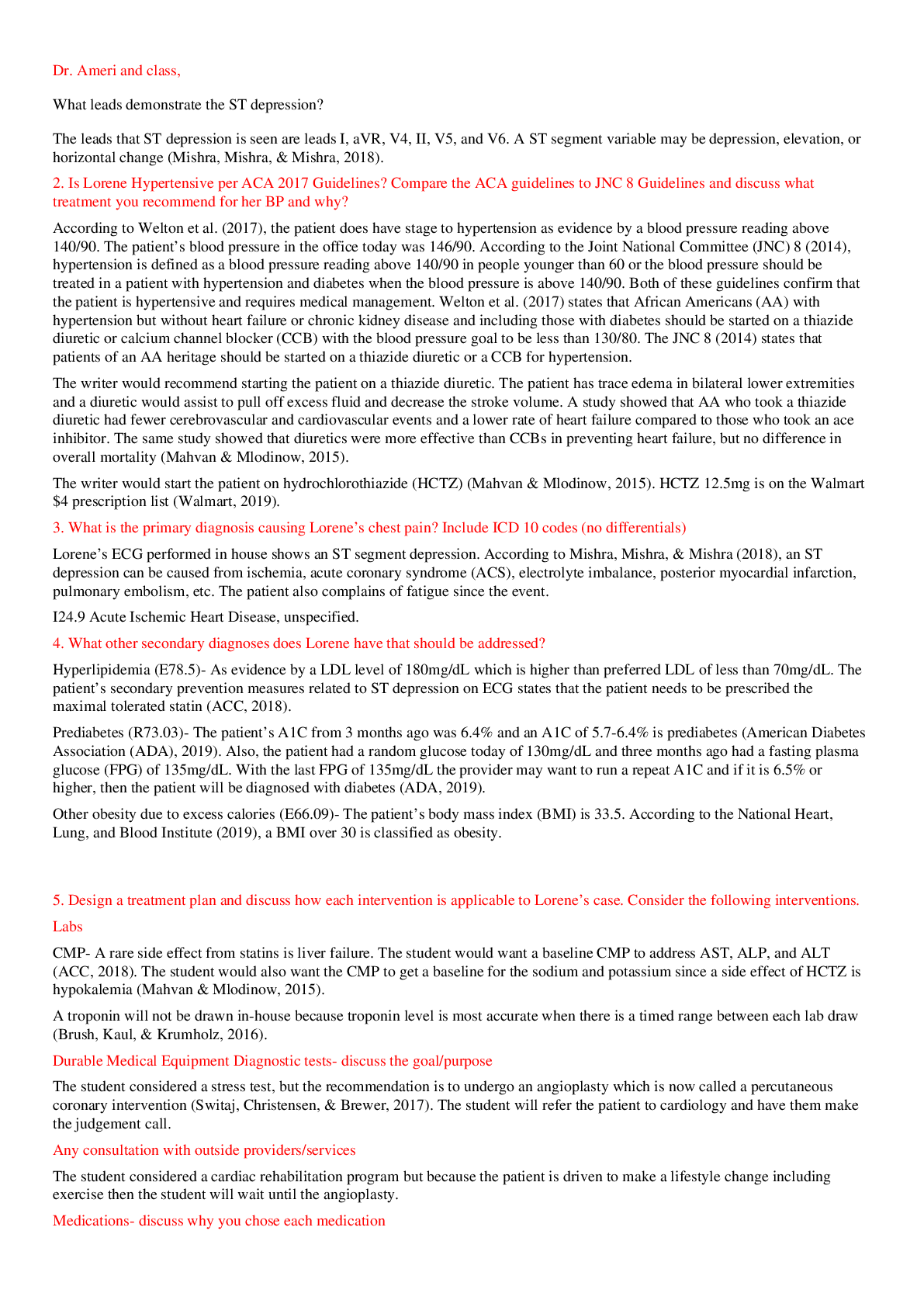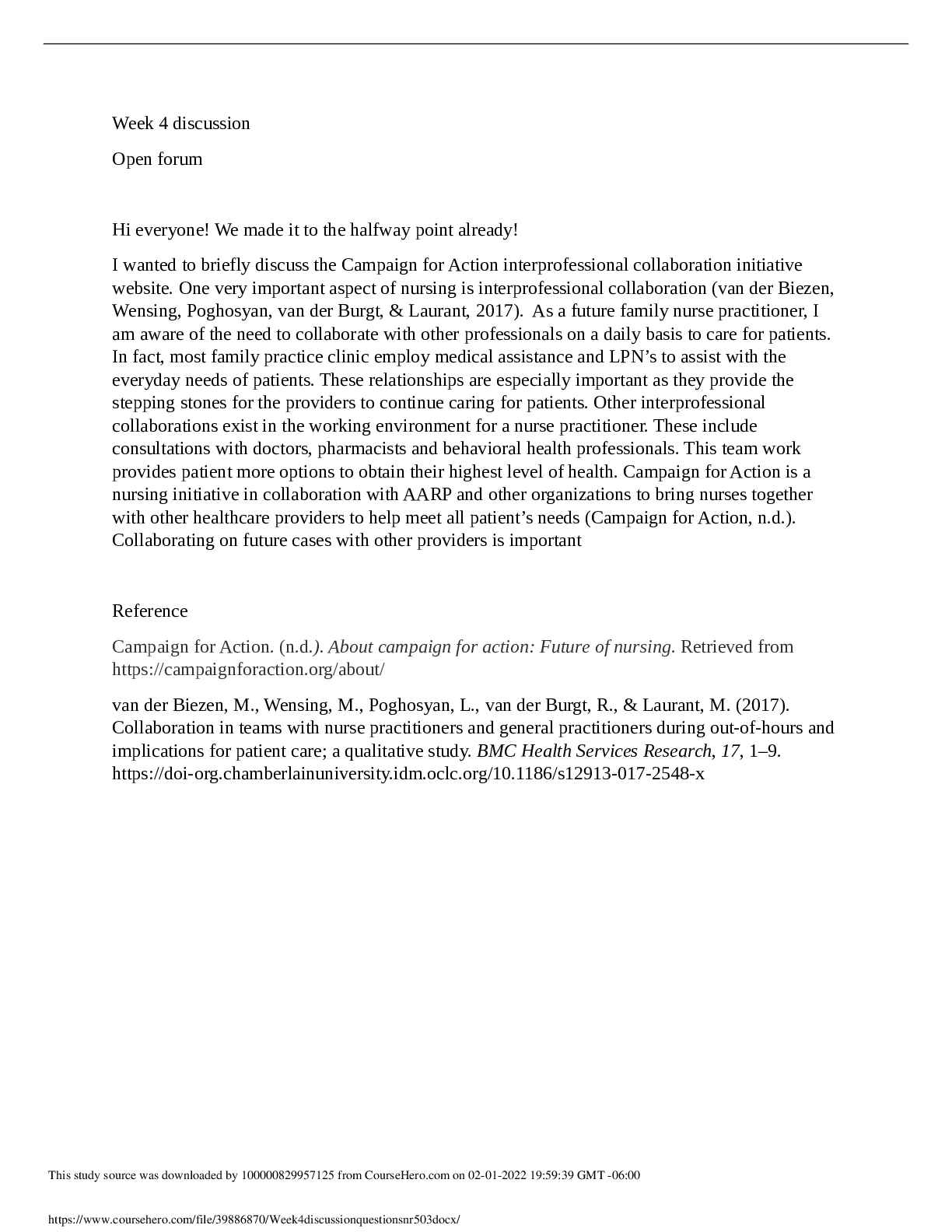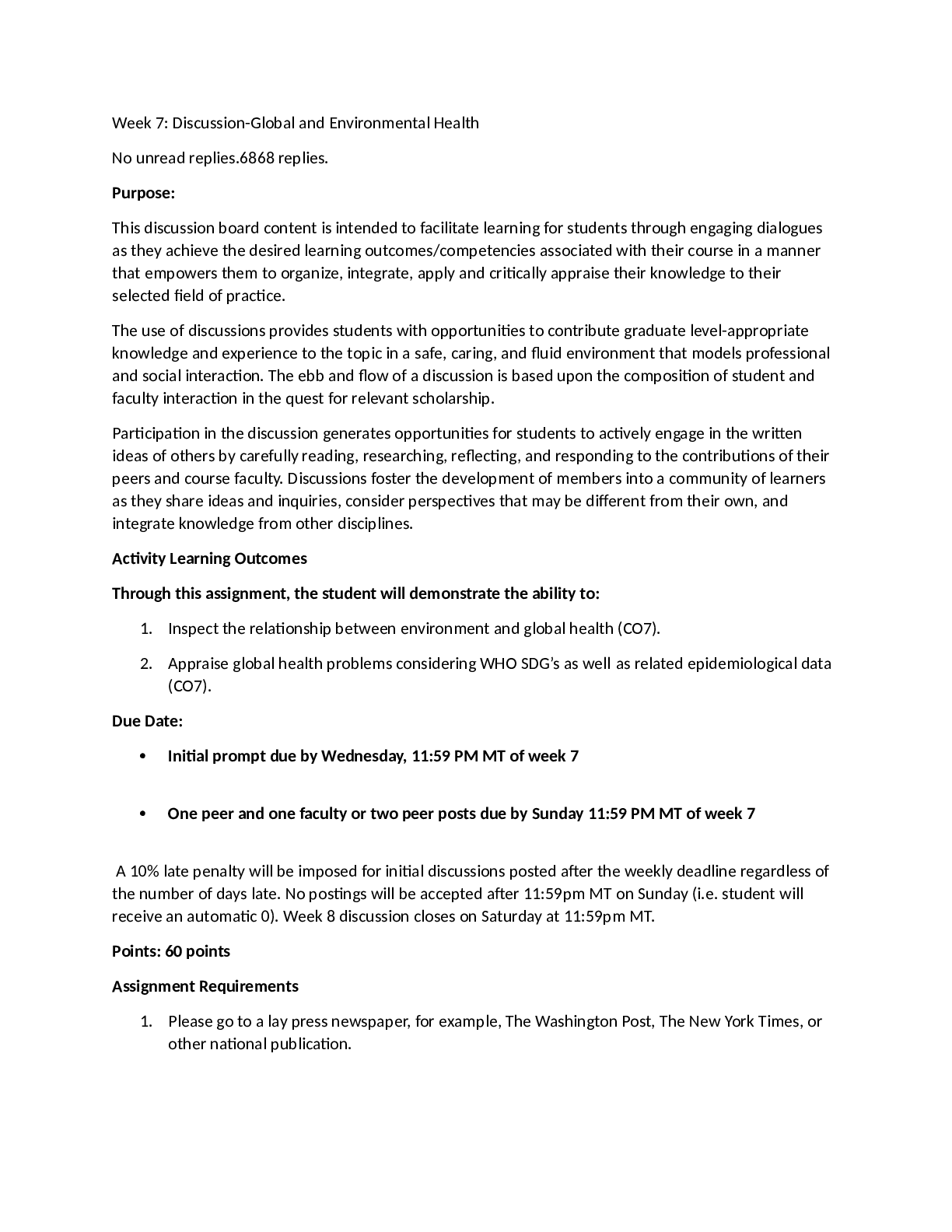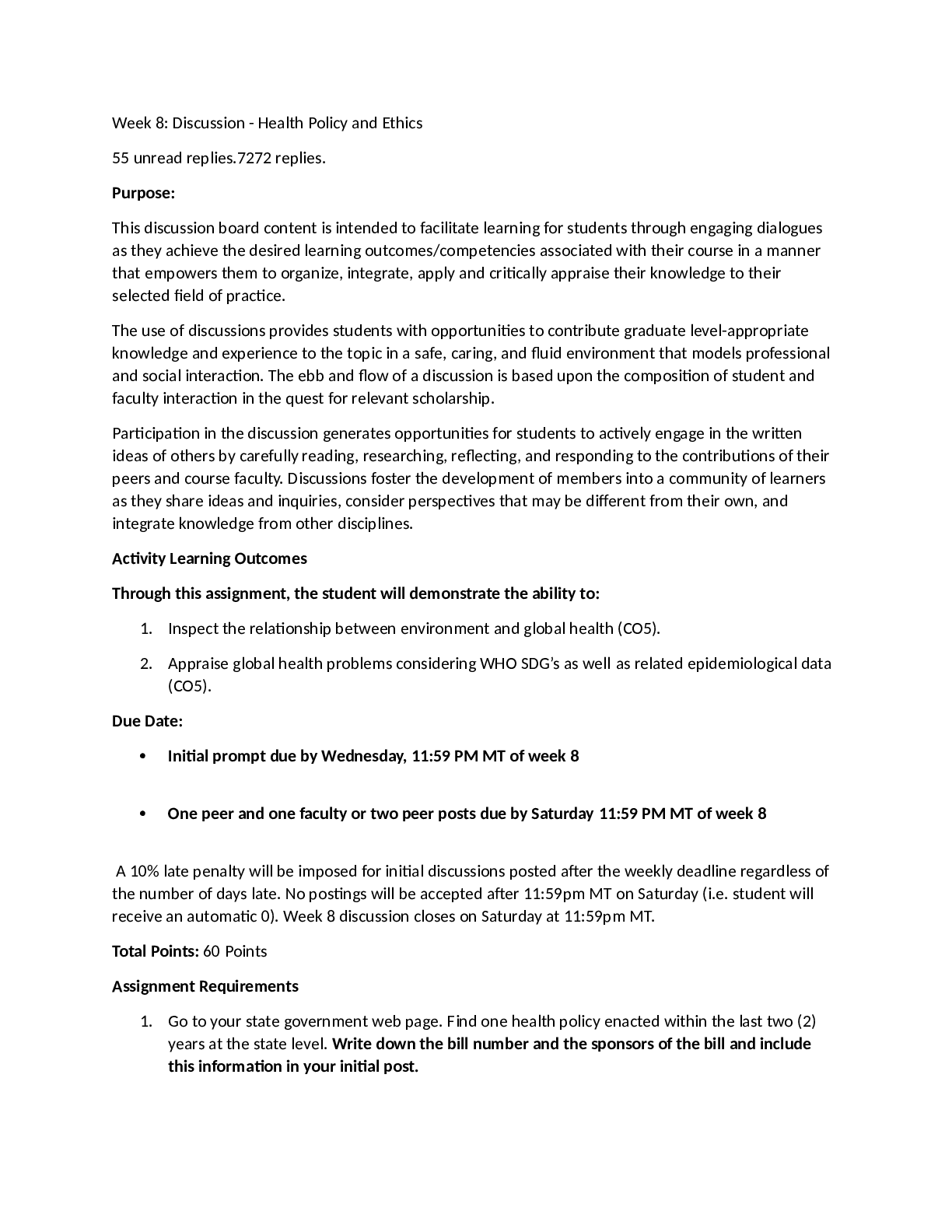Art > DISCUSSION POST > AHIST_1401_AY2020_T2_Discussion_4_2020 | AHIST 1401 Art History - Term 2, 2019-2020 (All)
AHIST_1401_AY2020_T2_Discussion_4_2020 | AHIST 1401 Art History - Term 2, 2019-2020
Document Content and Description Below
HOME CONTACT US RESOURCES LINKS FACULTY MY COURSES MENU AHIST 1401 Art History - Term 2, 2019-2020 Search forums Discussion 4 by Alison Binger (Instructor) - Wednesday, 1... 3 November 2019, 10:43 AM Beginning with the Renaissance the Church is no longer the only primary patron of the arts. Private families, governments and other secular (non-religious) groups begin to hire artists with greater frequency. What eàect do you think this new diversity in patrons had on the arts in the 15th-18th centuries? Include some speciÕc examples of works commissioned by these new patrons. 60 words Permalink | Reply Re: Discussion 4 by Osman Bawa - Thursday, 5 December 2019, 6:13 AM Discussion Assignment Unit 4 AHIST 1401 Art History University of the People/ In this modern world, not only Churches but also Private families, governments and other secular (non-religious) groups need to hire artists to manage the work of art in their business. No matter how intelligent we are, we cannot be the boss in every Õeld hence artists also need those who would pay for their eàort. As we learned from this week’s reading material, the most muniÕcent patronage occurred in Italy during the Renaissance under patrons such as Cosimo de’ Medici whose patronage turned Florence into the greatest center of art in all of Italy, the Sforza, and many popes. What eàect do you think this new diversity in patrons had on the arts in the 15th-18th centuries? The Õrst eàect of this new diversity in patrons we can think of is the increase in employment opportunities for artists. This inÖuenced many young artists to delve into their profession as they can make a living out of their eàort. The diverse eàect of patrons inÖuences in art in the 15 – 18 centuries was supremely good. Oil on wood paintings was introduced by painters as a new medium of the artwork. This new diversity in patrons was a revival of intellectual, value and classical art of former empires. Private families, governments and other secular (non-religious) groups started to be patrons of arts in the renaissance era and were Öowering in Italy. (Erlambang, 2019). From what I have read, the Dukes gain more attention with regard to this diversity from greatest artist because they were powerful and inÖuential. The patronage made many artists thrive by providing them with employment opportunities, it also helps in propelling artists to a new height in their various careers which inspired the most valuable artist during the Renaissance. This new diversity in patrons helped artists to succeed in the 15 – 18 centuries due to patronage and interest of patrons from all other groups including the Church. SpeciÕc examples of works commissioned by the patrons. The private chapel that the Medici commissioned Michelangelo to construct in 1520 also known as the chapel of the Medici in addition to the sculptures and paintings that would decorate it could be served as a more speciÕc example in this discussion. Th th Th th/ Chapel of the Medici, Michelangelo: https://en.birmiss.com/chapel-of-the-medicimichelangelo-description-and-photo// References Cohen, A. (2018, August 20). In the Italian Renaissance, Wealthy Patrons Used Art for Power. Retrieved December 5, 2019, from https://www.artsy.net/article/artsyeditorial-italian-renaissance-wealthy-patrons-art-power. Erlambang, T. (2019, July 13). What Eàect of Diversity Patrons on the Arts in the 15th-18th centuries? - part 1. Retrieved December 5, 2019, from https://www.tanzaerlambang.info/2019/07/what-eàect-of-diversity-patronson.html. Harris, D. B., & Zucker., D. S. (n.d.). Northern Renaissance art under the Burgundian rule. Retrieved December 5, 2019, from https://www.khanacademy.org/humanities/renaissance-reformation/northernrenaissance1/beginners-guide-northern-renaissance/a/burgundy-and-theburgundian-netherlands. Renaissance in Italy and the North: (2015) Retrieved December 7, 2016 2016 fromhttps://www.khanacademy.org/humanities/renaisssancereformation/northern-renaissance1/beginners-guide-northern-renaissance 499 words Permalink | Show parent | Reply Re: Discussion 4 by Ajibola Okubanjo - Friday, 6 December 2019, 7:23 PM Hi Osman, Another very good post this week!, liked this sentence from your post "This inÖuenced many young artists to delve into their profession as they can make a living out of their eàort.", this line holds true even til today, artists who don't have to worry about making a livelihood from their art because of wealthy patrons became more creative and expressive in their art as a result, Michelangelo in particular was discovered from a young age and became famous in part because of his patrons 87 words Permalink | Show parent | Reply/ Re: Discussion 4 by Osman Bawa - Tuesday, 10 December 2019, 3:02 AM Thank you, Ajibola, for taking out your precious time to go through my post. Thanks for the comment. 18 words Permalink | Show parent | Reply Re: Discussion 4 by Earl Montgomery - Monday, 9 December 2019, 8:30 AM Osman, I enjoyed reading your submission. Cosimo de Medici was an fascinating character and excellent choice. Your submission is concise, something I could probably learn from. Thank you for your submission. 31 words Permalink | Show parent | Reply Re: Discussion 4 by Osman Bawa - Tuesday, 10 December 2019, 3:03 AM I really appreciate that, Earl. Thanks for your comment. 9 words Permalink | Show parent | Reply Re: Discussion 4 by Giorgia Magliocchetti - Wednesday, 11 December 2019, 12:26 PM Dear Osama, great job, I read carefully it and I can say it is well done, perfectly written and it is v ery clear even for someone doesn't know the matter. Also the pictures help to deeply understand what are you talking about. Thank you for sharing with us. 49 words Permalink | Show parent | Reply Re: Discussion 4 by Xiaoling Chen - Wednesday, 11 December 2019, 3:45 PM Goof work. Thank you for your response to this Unit./ 10 words Permalink | Show parent | Reply Re: Discussion 4 by Alexis Cornmesser - Wednesday, 11 December 2019, 5:12 PM I really enjoy your writing style. Your format makes following along very straight forward and easy to follow along to. I like your perspective on how modern art has been eàected by the expansion of patronage. 36 words Permalink | Show parent | Reply Re: Discussion 4 by Martin Eshun - Wednesday, 11 December 2019, 6:39 PM Art indeed is beautiful, upon reading your post I will never regrets of taking this course. The Chapel of the Medici is indeed awesome. By the ways thanks for sharing this beautiful post. 33 words Permalink | Show parent | Reply Re: Discussion 4 by Alison Binger (Instructor) - Thursday, 5 December 2019, 3:55 PM Leonardo da Vinci is an artist that lived during the Renaissance and his portrait the Mona Lisa is one of the most famous paintings in the history of Õne art. It is believed to have been commissioned by Francesco del Gioconda. He wanted da Vinci to paint his wife. The painting never made it to Gioconda and is believed that da Vinci was never paid for it. Ironically it is now one of the most expensive paintings in the world. My art students ask me continuously why is the Mona Lisa so famous. They explain they do not think the painting is very beautiful or aesthetically pleasing. I typically chuckle at their honesty and feel their opinions are absolutely valid and deserve an explanation. -Da Vinci was a well known scientist and inventor as well as an artist. He created such inventions as the helicopter (idea only), parachute, 33-barreled organ (gun), armored car, giant crossbow (for psychological eàects in warfare), triple barrel canon, clock (a more accurate clock), an ideal city, robotic knight (pulley and weights), self-propelled cart, scuba gear, revolving bridge and the list goes on. He was quite famous in his time amongst the government as well as the people./ -Da Vinci tends to be shrouded in mystery. There is not a lot known of him except from taxes, sketchbooks, and second hand stories so it goes to stand that his art work is as mysterious as he was. It appears da Vinci pushed his boundaries in life while he was alive. He was thought to be a gay man, which was illegal during his time period. He was brought up on charges for his sexual choices and his sketchbooks allude to this being his life style. You can imagine how diÞcult it must have been for him when we still have deeply held negative beliefs in many cultures throughout the world about same sex relationships. Even though he lived an alternative life style, he was well liked, favored by Francois I, and created an aura of celebrity around himself. -He also pushed boundaries in his artwork and created a unique an innovative painting technique that redeÕned the art at that time. He took out the line and borders that surrounded all objects in a painting. The black lines were similar to what our cartoons look like today. Taking away the black lines around the subjects created a more realistic and somewhat of a dream like look. It is called sfumato technique. -He created a background that is mysterious. People at the time and still to this day question what the background is. It appears to some to be almost science Õction in a time that science Õction didn’t really exist. -The Mona Lisa’s smile is not a common trait in paintings. Da Vinci used the sfumato techniques and quite possibly geometry to create a sort of optical illusion when looking at the Mona Lisa. Optical illusions in art did not exist at the time and today tends to be one of the most popular types of art since it tricks your eyes and keeps the viewer engaged. He created the painting so when the viewer looks at the eyes the mouth falls under the viewer’s peripheral vision and makes it appear the mouth is smiling but once the viewer focuses on the mouth, the smile slowly disappears. This makes the viewer want to keep looking and looking. -The painting was always displayed in a place of importance. It was publicly displayed in Fontainebleau one of Francois I favorite chateau. In the 1800s it hung in Napoleon’s bedroom. It was then moved to the Louvre where it is still housed today. -It was stolen out of the Louvre in 1911. Pablo Picasso the famous Cubist painter was Õrst accused of stealing it until the thief was captured. This brought lots of publicity to the artwork and it is now housed behind bulletproof glass to ensure its safety./ There are a tremendous amount of other mysteries surrounding the painting as well but these seven areas I have discussed are scientiÕcally documented and agreed upon by scholars. Currently the Mona Lisa is to be worth approximately 800 million US Dollars. Dr. BInger References Leonardo Da Vinci Inventions. (2019, February 26). Retrieved from www.da-vinciinventions.com Richman-Abdou, K. (2018). The history and legacy of Leonard da Vinci’s mysterious Mona Lisa. Retrieved from www.mymodernmet.com/Leonardo-da-vinci-mona-lisafacts// 734 words Permalink | Show parent | Reply Re: Discussion 4 by Ajibola Okubanjo - Friday, 6 December 2019, 7:42 PM Hi Dr Binger, Very interesting fact about Leonardo Da Vinci and his very famous Mona Lisa painting, I've never looked at it the way you described it, as you said, it is a trick of the eyes, always seemed oà to me that the Mona Lisa painting has a weird smile that kinda changes depending on how you look at it, now I know the reason why. Also, Õrst I'm hearing of the sfumato technique, which as you said, a technique that blends the edge between colors so there's a soft transition and hence, no lines can be perceived by the viewer. 102 words Permalink | Show parent | Reply Re: Discussion 4 by Alison Binger (Instructor) - Sunday, 8 December 2019, 7:29 PM Excellent Ajibola. I love hearing what you have learned. Dr. Binger 11 words Permalink | Show parent | Reply Re: Discussion 4 by Earl Montgomery - Monday, 9 December 2019, 8:41 AM Professor Binger, Thank you. A little tidbit about Leonardo da'Vinci, something him and I have in common, we both can write upside down, backwards, and upside backwards. It is said that he would do it to keep prying eyes from learning what he was working on. I have a nice sized collection of books and I believe I still have a book about da'Vinci and his inventions. 67 words [Show More]
Last updated: 1 year ago
Preview 1 out of 66 pages
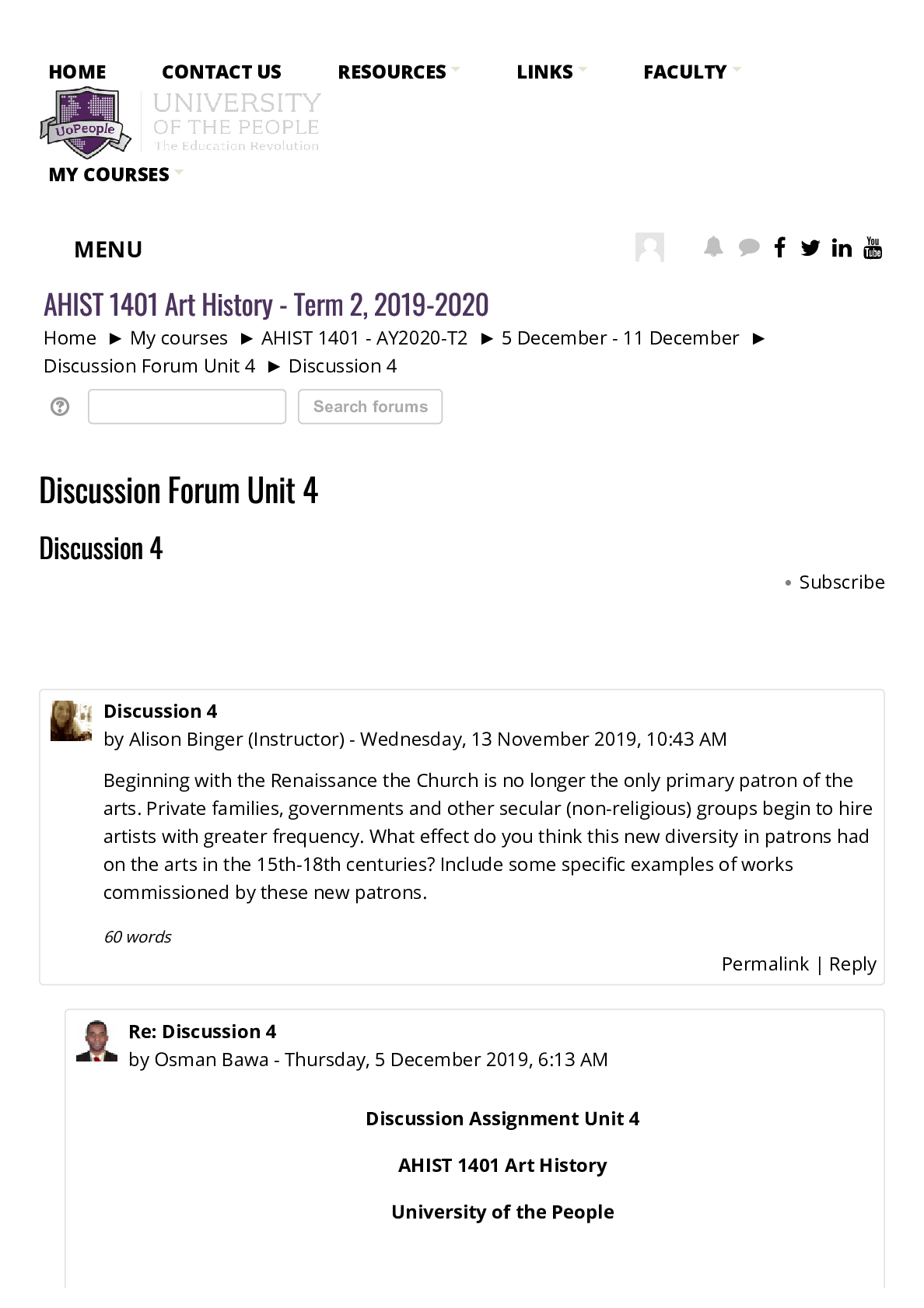
Reviews( 0 )
Document information
Connected school, study & course
About the document
Uploaded On
Feb 24, 2021
Number of pages
66
Written in
Additional information
This document has been written for:
Uploaded
Feb 24, 2021
Downloads
0
Views
64

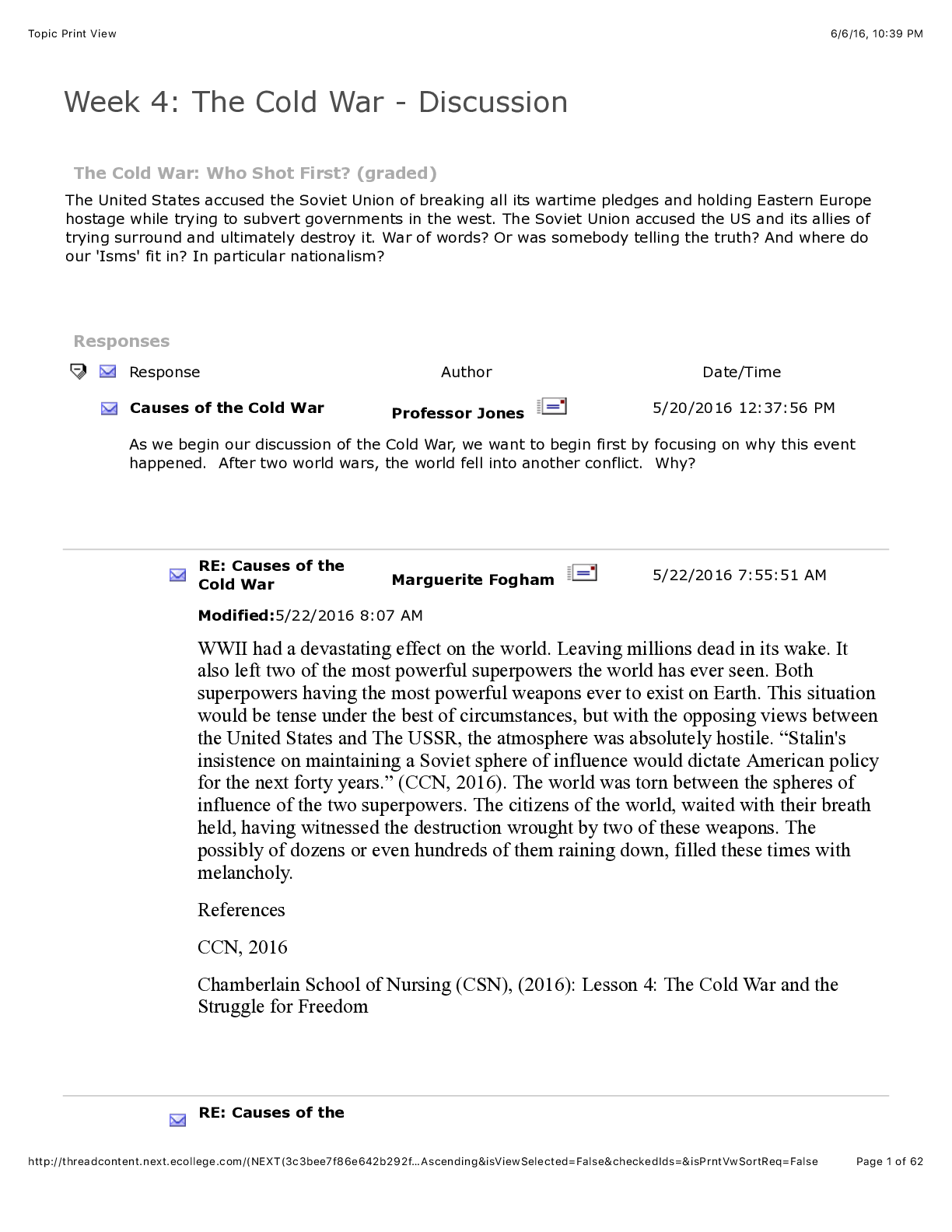
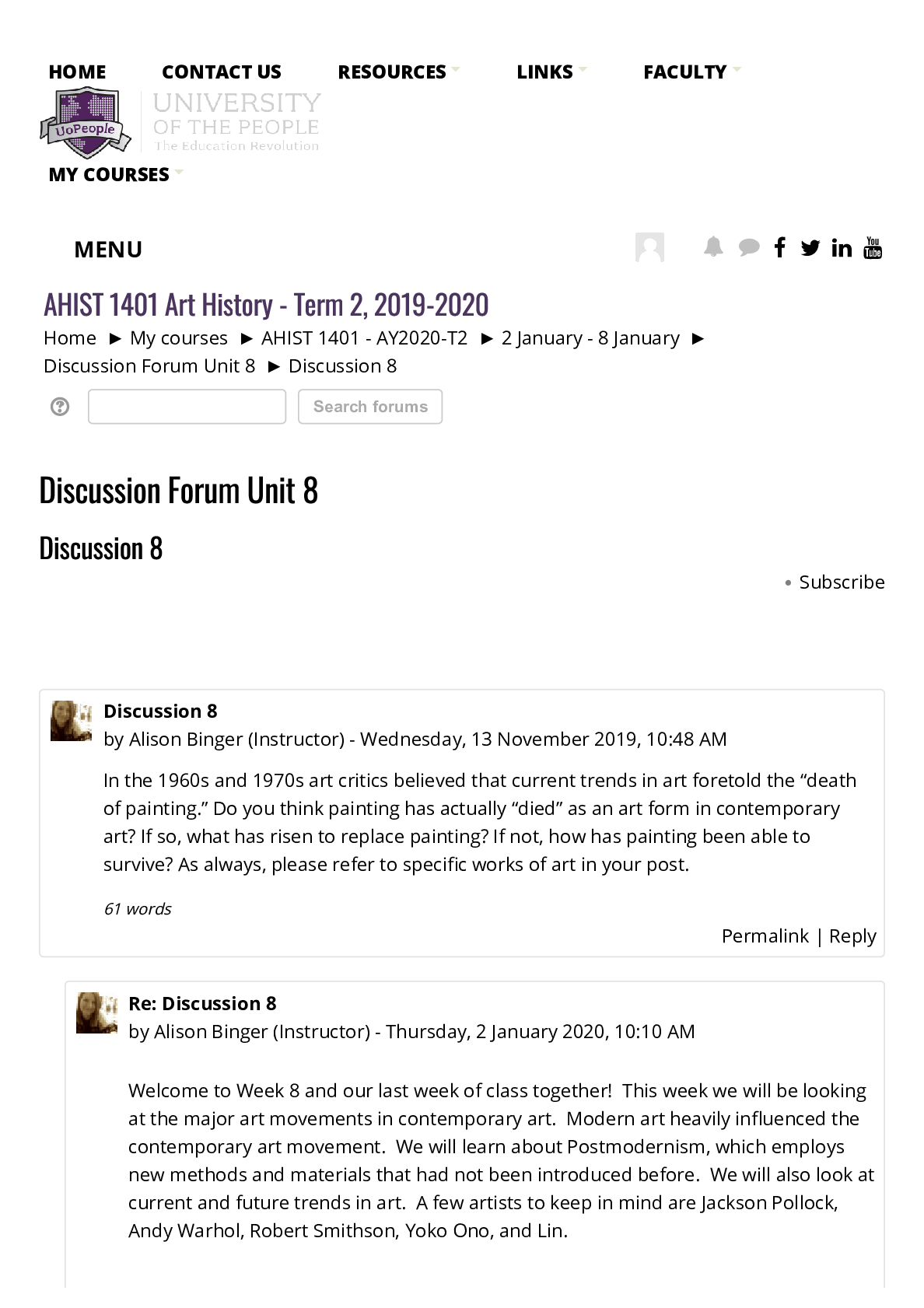
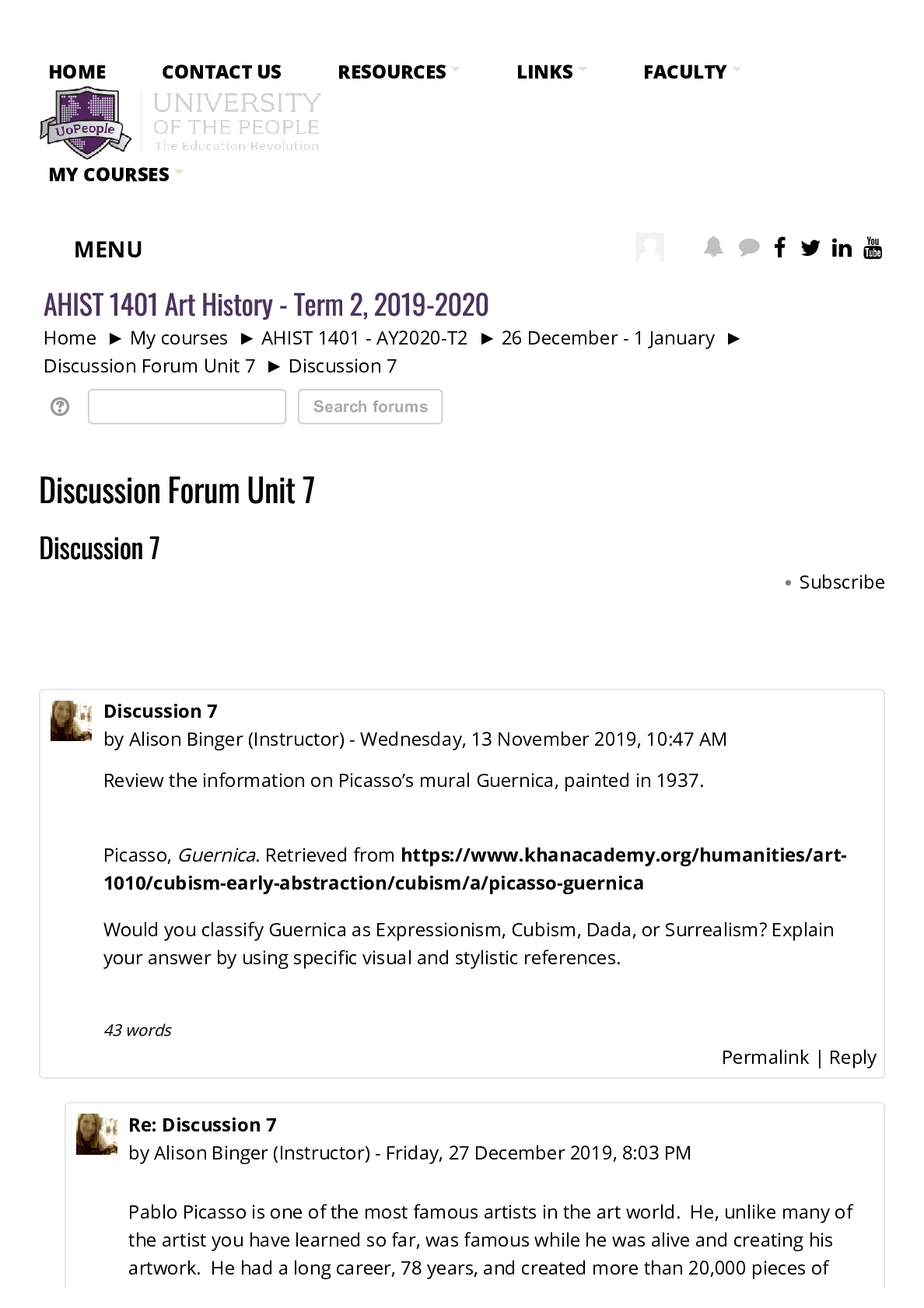

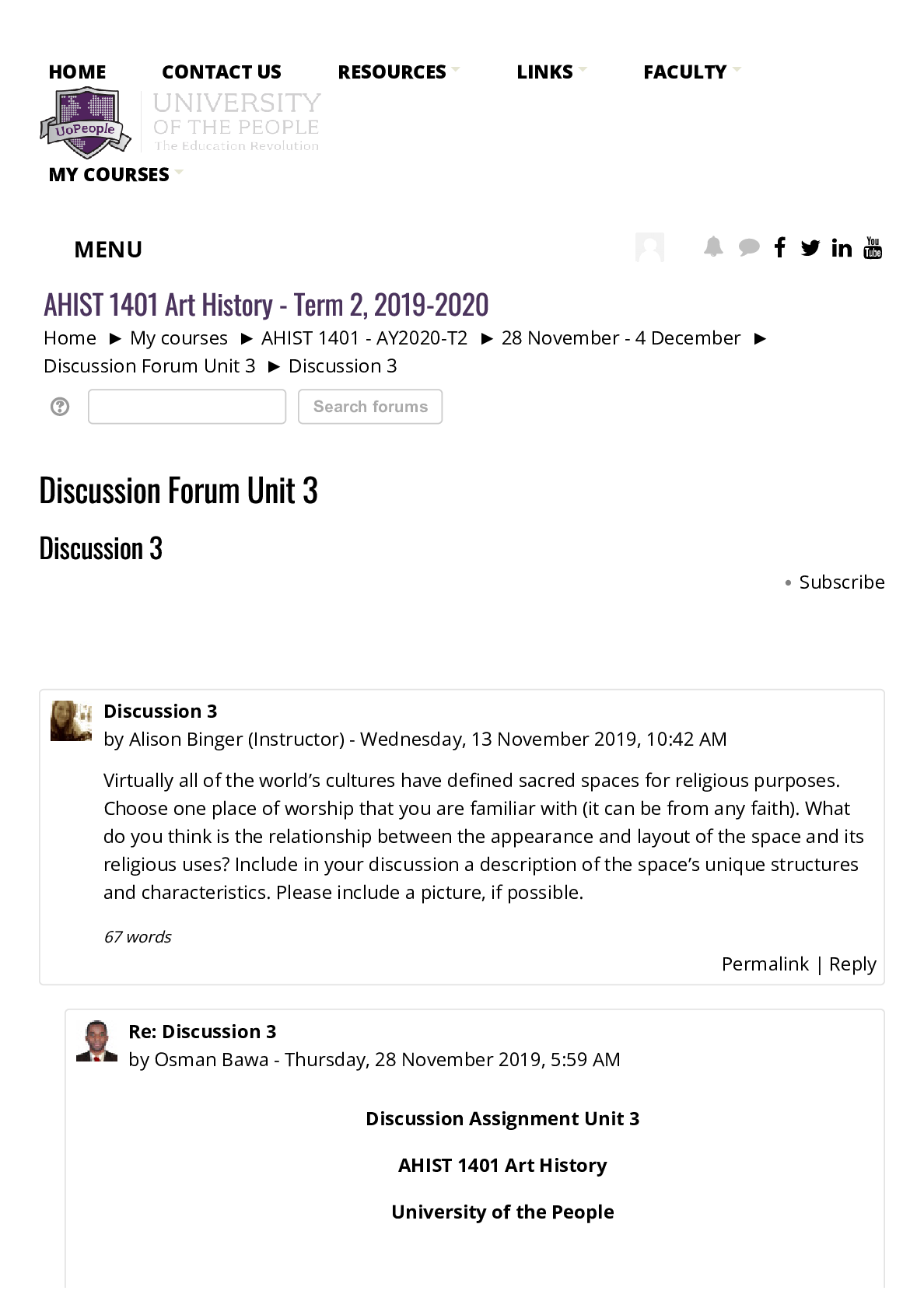

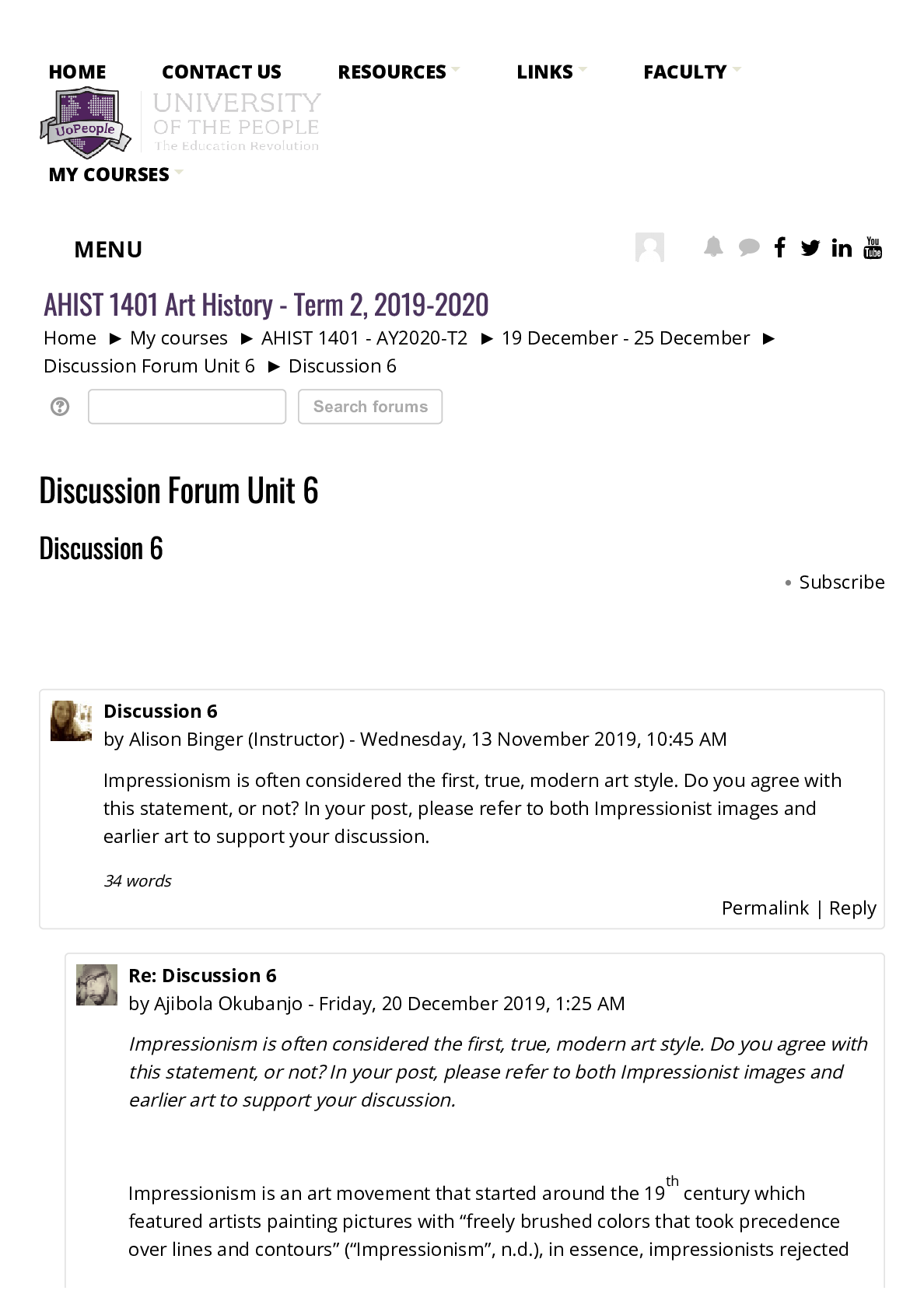


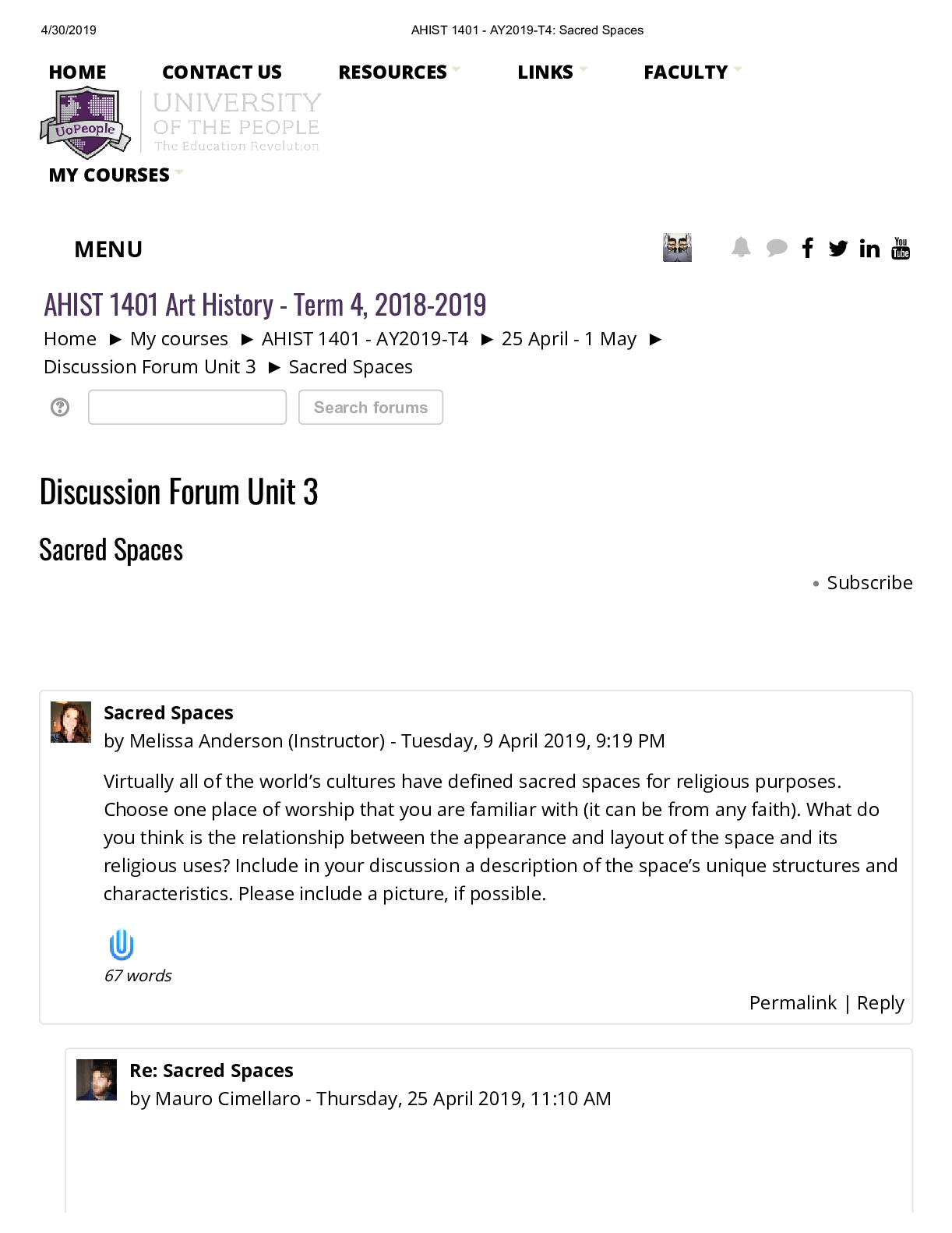
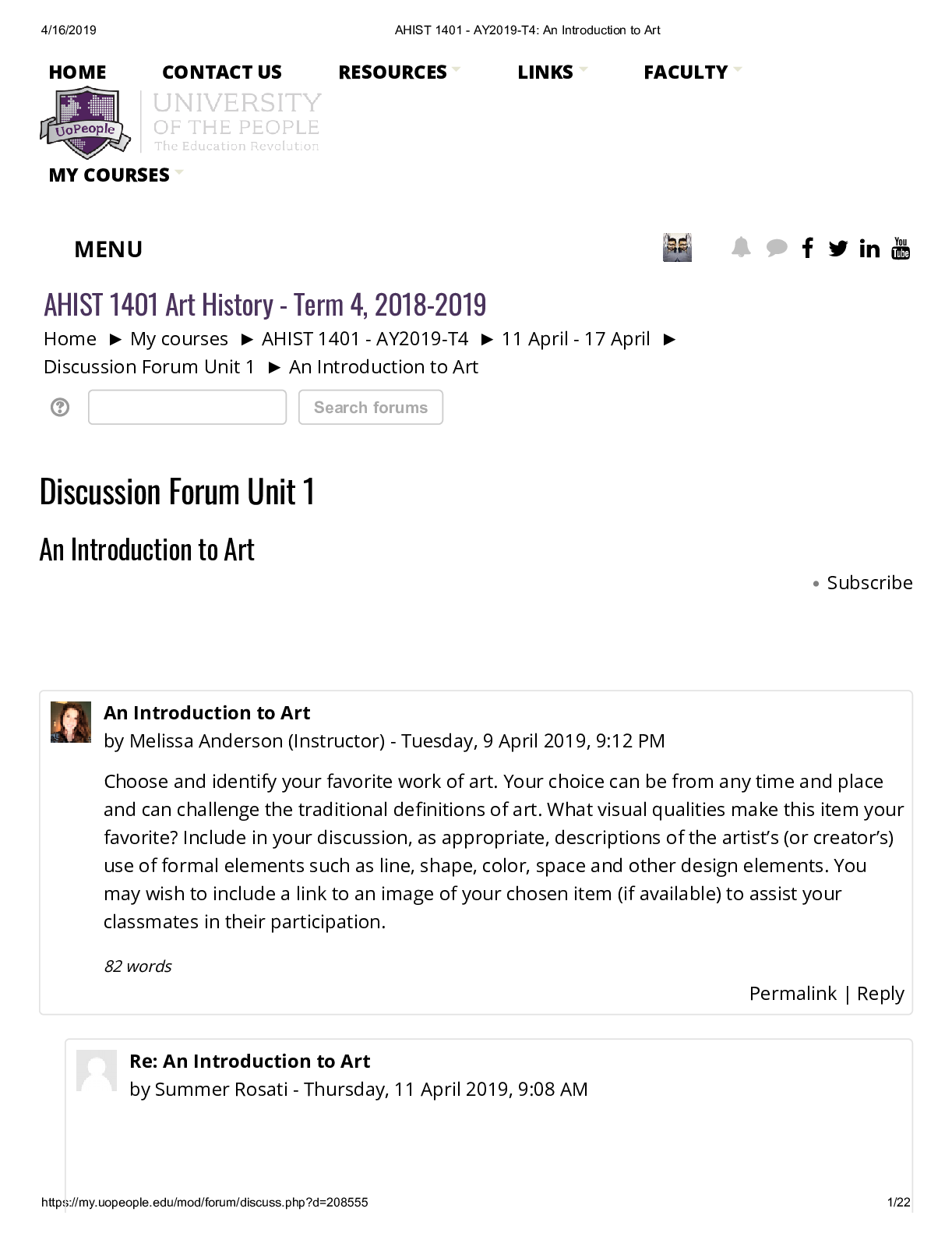
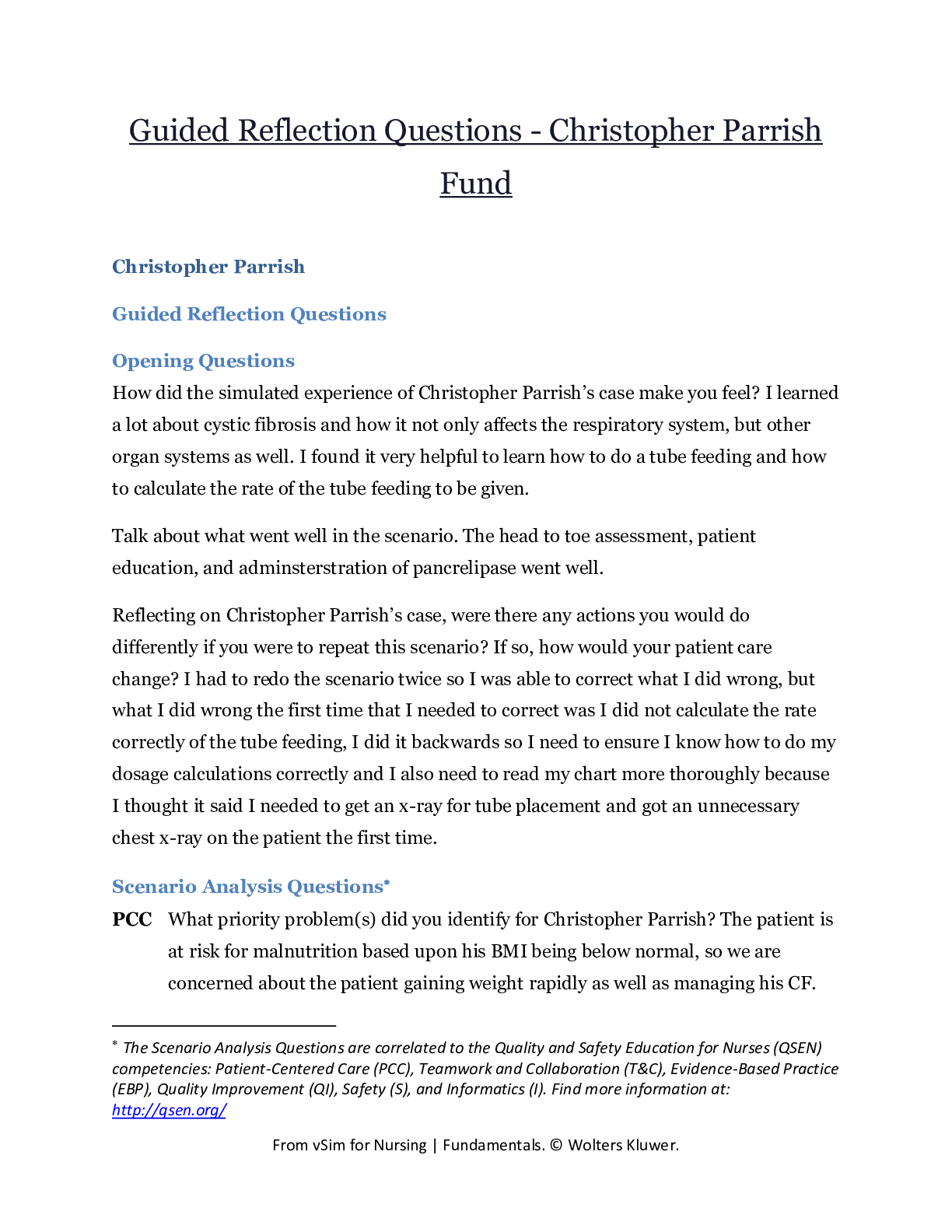
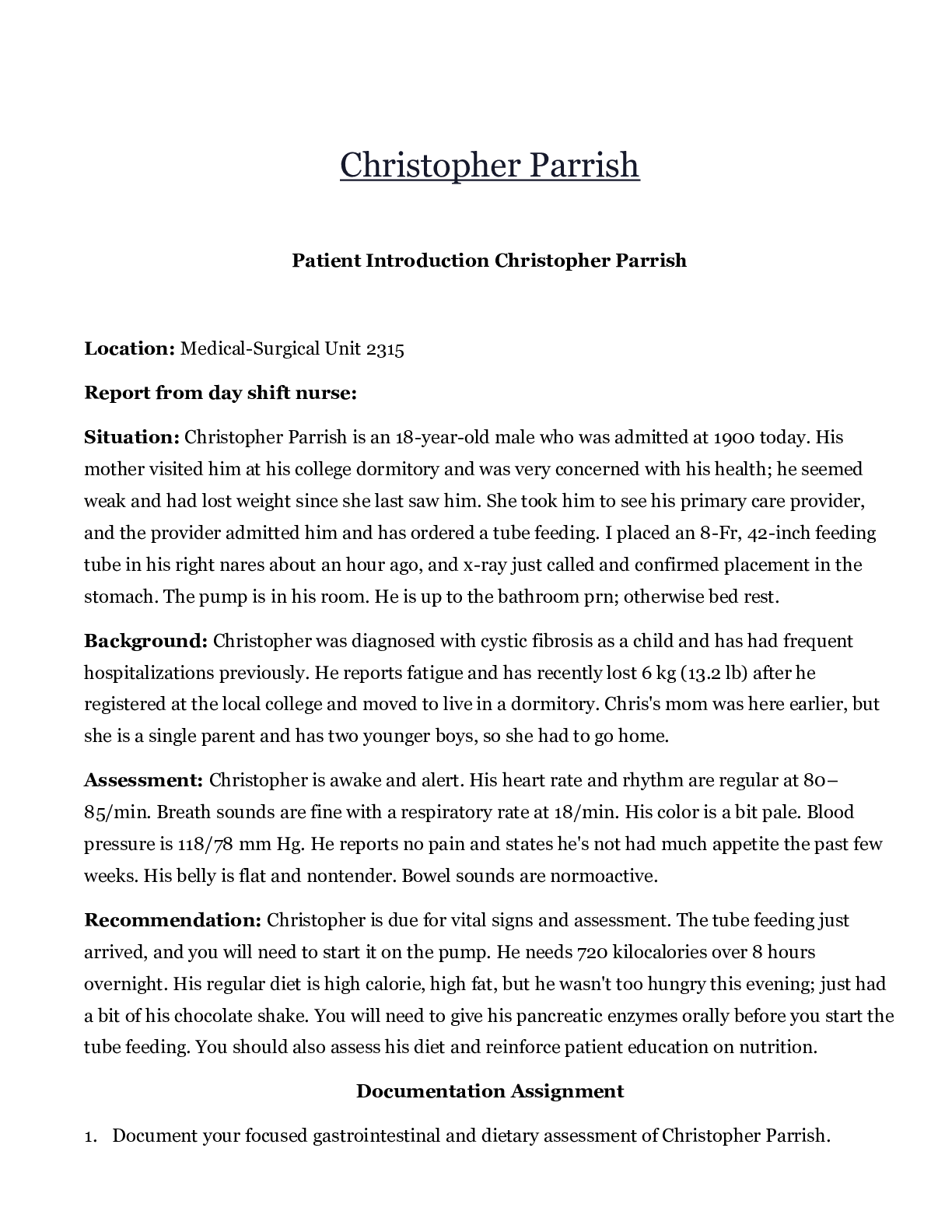
 – South Carolina State University.png)
 – South Carolina State University.png)
